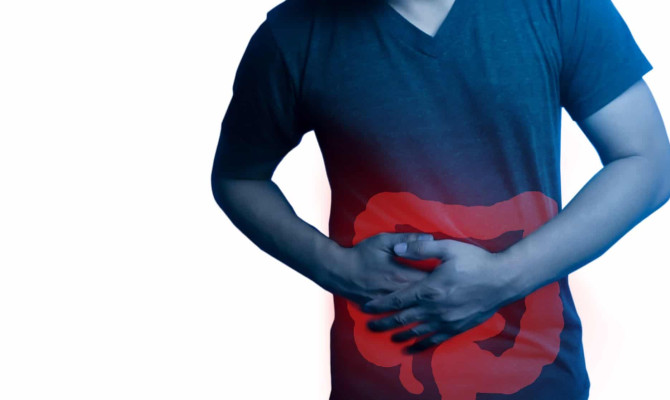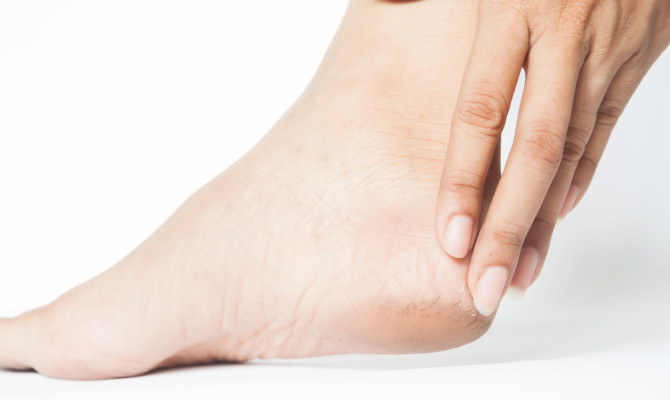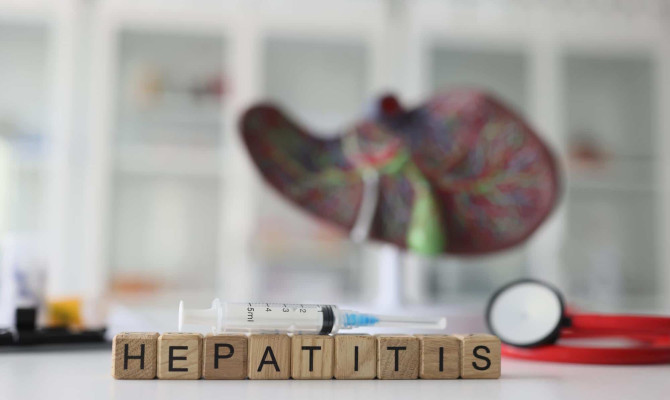Ebola Virus Disease : Causes, Symptoms and Treatment

- Ebola virus disease
- 17 Aug 2023
Overview
What is Ebola virus disease?
Ebola virus disease, previously referred to as Ebola hemorrhagic fever, is characterized by its distinctive hemorrhagic fever symptoms. The fatality rate for the disease varies widely, ranging from 25% to 90%, with an average rate of approximately 50%. It can rapidly advance to failure of multiple organ systems, resulting in shock and ultimately, death. The specific strain of the ebolavirus plays a significant role in determining the severity, with the Zaire ebolavirus strain being the most lethal.1Overview| Researched based study from Nlm.nih.gov
While the disease has a high fatality rate, there have been cases where individuals have successfully recovered from Ebola. Early diagnosis, supportive care, and prompt medical treatment can significantly improve the chances of survival. Additionally, the development of vaccines and experimental treatments has further increased the chances of successful recovery for those infected with Ebola.

Types
Major types of Ebola Virus
Below are the names of the four ebolaviruses that can infect humans, along with their associated viral species and the names of the diseases they cause:2Types| Researched based study from Cdc.gov
- The virus known as Ebola virus leads to the development of Ebola virus disease.
- Sudan virus is responsible for causing Sudan virus disease.
- Taï Forest virus is the cause of Taï Forest virus disease.
- Bundibugyo virus is responsible for the occurrence of Bundibugyo virus disease.
Symptoms
Symptoms of Ebola Virus infection
- The period between infection and the onset of symptoms typically ranges from 2 to 21 days.
- The transmission of Ebola can only occur when an individual starts experiencing symptoms.
- The signs of Ebola infection can manifest abruptly and encompass fever, exhaustion, muscular discomfort, an aching head, and a sore throat.
- Subsequently, individuals may experience emesis, gastrointestinal upset, dermatitis, as well as internal and external hemorrhaging.3Symptoms| Researched based study from Who.int
After recuperating from Ebola, certain individuals may experience persistent symptoms for a period of two years or more. These symptoms can comprise:
- Feeling exhausted, weary, or experiencing a lack of energy.
- Experiencing head pain
- Suffering from muscular discomfort, bodily aches, or discomfort in the joints.
- Ocular pain and visual impairment
- Unintentional or excessive gain in body weight.
- Discomfort or pain in the belly region accompanied by a low desire to eat.
- Loss of hair from the scalp or other parts of the body.
- Dermatological issues
- Difficulties in falling asleep or maintaining a proper sleep pattern.
- Cognitive impairment
- Hearing loss or difficulties in hearing.
- Mood disorders3Symptoms| Researched based study from Who.int
Causes
Causes of Ebola Virus disease
Origin
- Ebola is a viral disease that originates from contact with wild animals.
Transmission
- Ebola is transmitted between individuals when they come into contact with:
- Infected bodily fluids, such as semen, saliva, blood, feces, urine, and vomit
- Personal items, such as needles or contaminated garments, that have been tainted with infectious bodily fluids.4Causes| Researched based study from Nhs.uk
- Transmission of Ebola can occur through direct contact with the body of an infected individual during burial practices.
- Sexual contact with a person in the recovery phase or a survivor has been shown to result in transmission, as the virus can remain present in semen for several months after recovery.
- In healthcare settings where adequate infection control measures and barrier nursing precautions are lacking, healthcare workers are at risk of contracting the virus through close contact with Ebola patients.5Causes| Researched based study from Gov.uk
After acute illness, the Ebola virus can persist in certain areas of the body, including the testes, eyes, placenta, and central nervous system.
There is no evidence to suggest that the Ebola virus can be transmitted through intact skin or through small droplets, such as those produced by coughing or sneezing.
Prevalence
Prevalence of Ebola Virus disease
- The initial instances of Ebola virus infection were recorded in Zaire in 1976.
- The Ebola outbreak resulted in 318 reported cases and 280 deaths, indicating a case fatality rate of 88%.
- The same Zaire ebolavirus strain was responsible for the West Africa outbreak that commenced in 2014 and concluded in 2016.
- Genetic analysis revealed that the virus isolated from infected individuals during this outbreak shared a 97% similarity to the virus strain that emerged in 1976.
- Previous outbreaks caused by Zaire ebolavirus have reported case fatality rates as high as 90%.
- In 2022, an outbreak of Sudan ebolavirus disease occurred in Uganda, commencing on September 20, 2022, and officially declared over on January 11, 2023.
- This outbreak resulted in a total of 142 confirmed cases and 55 deaths6Prevalence| Researched based study from Bmj.com
Diagnosis
Diagnosis of Ebola Virus disease
- Detecting Ebola disease in the early stages of infection can pose challenges.
- Initial symptoms such as fever, headache, and weakness are nonspecific and can be observed in patients with various common illnesses like malaria and typhoid fever, making it difficult to diagnose Ebola based solely on these symptoms.
- If an individual displays symptoms of Ebola disease and has potentially been exposed, it is essential to collect and examine blood samples to confirm the infection.
- Ebolaviruses can be identified in blood samples once symptoms appear, although it may take up to three days for the virus to reach detectable levels.7Diagnosis| Researched based study from Cdc.gov
- Polymerase chain reaction (PCR) is a widely utilized diagnostic technique for Ebola disease due to its ability to detect even small amounts of the virus.
- However, as the virus decreases in concentration over time, PCR methods may become ineffective.
- Another method used to confirm exposure to and infection by an ebolavirus is the detection of antibodies in the patient’s blood.
Treatment
Treatment of Ebola Virus disease
Medications
It is crucial for individuals experiencing symptoms of Ebola to seek immediate medical attention. Prompt medical care significantly enhances the chances of survival from Ebola. Treatment typically involves the administration of oral or intravenous fluids and medications within a hospital setting.
- Inmazeb (atoltivimab, maftivimab, and odesivimab-ebgn), a combination of three monoclonal antibodies, has been granted approval by the U.S. Food and Drug Administration as the initial FDA-approved treatment for Zaire ebolavirus infection in both adult and pediatric patients.8Treatment| Researched based study from Who.int
- An effective vaccine exists for the Zaire strain of Ebola, which is administered in the form of antibody-based treatments.
- The antibody medicines are delivered intravenously and significantly improve the likelihood of survival.
Supportive treatment
Supportive interventions are crucial in saving lives for all forms of Ebola and encompass the following:
- Administration of oral or intravenous fluids – Providing fluids through the mouth or directly into the veins.
- Transfusion of blood – Transfer of blood from a donor to the patient.
- Medications to address concurrent infections – Treatment of other infections the individual may have, such as malaria.
- Medications for alleviating discomfort – Administration of drugs to relieve pain, alleviate nausea, vomiting, and diarrhea.8Treatment| Researched based study from Who.int
Diet
- To meet nutritional needs, it is recommended to consume approximately 1.2 grams of protein per kilogram of ideal body weight.
- Additionally, about 55% to 60% of total energy requirements should be obtained from carbohydrates.
- It is advisable to consume soft foods to prevent gastrointestinal discomfort.
- It is important to avoid consuming trans-fatty acids.9Treatment| Researched based study from Nlm.nih.gov
Risk
Who are at risk?
If any individual has visited an area where Ebola cases have been reported or had contact with animals that can transmit the virus, the person may be at risk of infection, particularly if he/she:
- Was present in a healthcare setting where Ebola patients were being treated and had direct contact with them.
- Had direct exposure to the blood or body fluids of a person who is infected with Ebola.
- Interacted with items such as bedding, towels, garments, personal belongings, or other objects that had come into contact with an individual infected with Ebola.10Risk| Researched based study from Hopkinsmedicine.org
Prevention
Prevention of Ebola Virus disease
- Maintaining good hygiene practices, including regular handwashing and diligent cleaning and disinfection, is advised to minimize the chances of acquiring Ebola disease.
- It is important to refrain from direct contact with the bodily fluids and tissues of individuals who are ill with Ebola or any unknown disease.
- It is essential to steer clear of any locations or activities that may lead to potential exposure. This includes avoiding homes or facilities where individuals are being cared for without adequate infection control measures in place.
- When it is not possible to avoid high-risk areas or activities, it is important to take necessary precautions to minimize the risk of exposure to the virus.
- It is crucial to refrain from engaging in unprotected direct contact with individuals who are sick. Additionally, it is important to avoid participating in unsafe burial practices.
- To minimize the risk of infection, it is advised to avoid any contact with both live and deceased wild animals, including their meat, body fluids, and feces. This precaution is necessary as these animals can potentially carry ebolaviruses. Species known to be associated with ebolaviruses include gorillas, monkeys, pigs, and others.
- ERVEBO®, approved by the U.S. Food and Drug Administration (FDA), is an authorized Ebola vaccine for the prevention of the disease in individuals aged 18 years and older. It is administered as a single dose.11Prevention| Researched based study from Canada.ca
Prognosis
Prognosis of Ebola Virus disease
The recovery from Ebola disease relies on effective supportive care and the patient’s immune response. Additionally, the use of investigational treatments has contributed to improved overall survival rates.8Prognosis| Researched based study from Who.int
- Individuals who successfully recover from the disease develop antibodies that can persist for up to 10 years, and potentially even longer.
- The survivors are believed to have a certain level of protective immunity against the specific species of ebolavirus that caused their illness. However, it remains uncertain whether recovered individuals are immune for life or if they can still be susceptible to infection from different species of ebolavirus.
- Some survivors may experience long-term complications, including issues with joints and vision. Ebola is still considered a serious and highly infectious disease.
- While significant progress has been made in understanding and managing the virus, it continues to pose a significant health threat, especially in areas where outbreaks occur.12Prognosis| Researched based study from Cdc.gov
Any feedback on this article?
 This Articles content was accurate
This Articles content was accurate Very Informative Article
Very Informative Article I have a question or a comment
I have a question or a comment
 This article contains inaccurate content
This article contains inaccurate content This article was not helpful
This article was not helpful I have a question or a comment
I have a question or a comment
We appreciate your helpful feedback!
Checkout our social pages
References
-
National Library of Medicine
Ebola Virus | Overview
-
Centers for Disease Control and Prevention
What is Ebola Disease? | Types
-
World Health Organization
Ebola virus disease | Symptoms
-
National Health Service
Ebola virus disease | Causes
-
UK Health
Ebola: overview, history, origins and transmission | Causes
-
BMJ Best Practice
Epidemiology -Ebola | Prevalence
-
Centers for Disease Control and Prevention
Diagnosis- Ebola Virus disease | Diagnosis
-
World Health Organization
Ebola virus disease | Treatment | Prognosis
-
National Library of Medicine
Nutritional Care for Patients with Ebola Virus Disease | Treatment
-
John Hopkins Medicine
Ebola | Risk
-
Public Health Agency of Canada
Ebola disease: Prevention and risks | Prevention
-
Centers for Disease Control and Prevention
Ebola disease-survivors | Prognosis




































